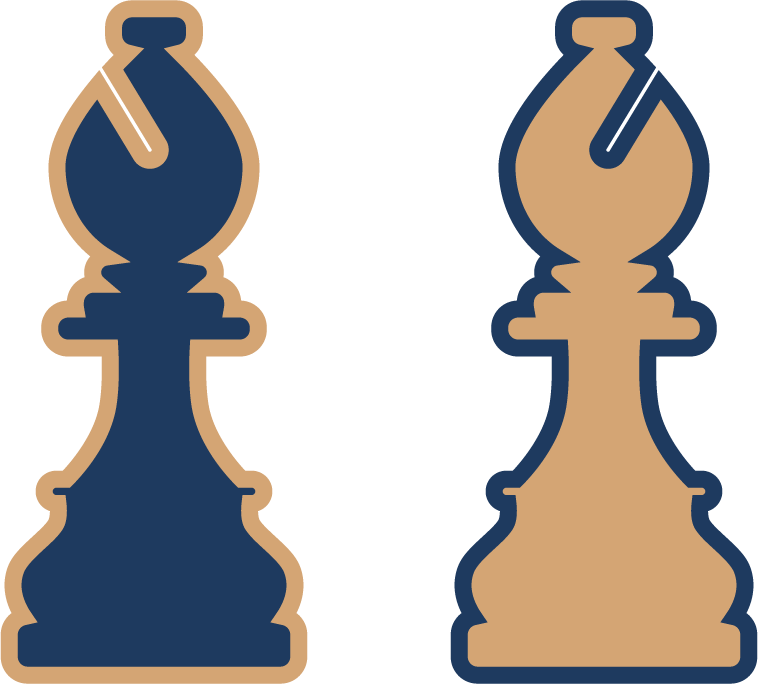Have you ever wondered why some people thrive in the face of challenges while others shy away? The answer often lies in their psychological approach to ability. Understanding the difference between a growth mindset and a fixed mindset can be a game-changer for your personal and professional life.
Research from Harvard shows that 90% of students praised for their effort chose challenging tasks, compared to their peers with a fixed mindset. This highlights the profound impact your mindset can have on your willingness to take risks and pursue success.
Whether you’re aiming for career advancement, personal development, or stronger relationships, your mindset plays a crucial role. Studies by Carol Dweck and others reveal that a growth mindset fosters adaptability, resilience, and continuous learning. On the other hand, a fixed mindset can limit potential and lead to avoidance behaviors, such as lying about test scores.
So, which mindset aligns with your goals? Let’s explore the evidence and help you make an informed choice.
Key Takeaways
- Effort-praised students are more likely to tackle challenges.
- Mindset influences career success and personal growth.
- Neuroscience supports brain adaptability with a growth mindset.
- Fixed mindset can lead to avoidance and dishonesty.
- Mindset impacts relationships and learning processes.
What is a Growth Mindset?
Why do some individuals see obstacles as opportunities for growth? The answer lies in their growth mindset, a concept popularized by psychologist Carol Dweck in her 2006 book, Mindset: The New Psychology of Success. This mindset revolves around the belief that abilities and intelligence can be developed through dedication and hard work.
Definition and Core Principles
At its core, a growth mindset contrasts sharply with traditional views that see intelligence and talents as fixed traits. Instead, it emphasizes the power of neuroplasticity—the brain’s ability to adapt and grow. Research from Mindset Health highlights that individuals with this mindset show increased activity in brain regions like the ACC and DLPFC during problem-solving tasks.
For example, Wright’s journey in developing financial skills demonstrates how consistent effort and a focus on learning can lead to mastery. This approach fosters resilience and a willingness to embrace challenges, as seen in the entrepreneurial iteration process from Harvard Business School case studies.
The Role of Effort and Learning
Effort is the cornerstone of a growth mindset. Educational strategies like “process praise” (focusing on effort) rather than “ability praise” (focusing on innate talent) have been shown to encourage students to take on challenges. A 7th grader’s self-description of active classroom participation illustrates how this mindset boosts engagement and confidence.
Neuroscientific evidence further supports this. Brain wave patterns during problem-solving reveal that individuals with a growth mindset are more likely to persist and find solutions. This aligns with the consensus of 143 creativity researchers, who emphasize the importance of resilience in achieving long-term success.
What is a Fixed Mindset?
What shapes the way people view their abilities and potential? A fixed mindset is the belief that intelligence and talents are static traits, carved in stone. This perspective often leads to avoidance of challenges and a fear of failure.
Characteristics and Beliefs
Individuals with a fixed mindset tend to see their abilities as unchangeable. They often avoid tasks that might expose their limitations. For example, in Dweck’s puzzle experiment, 4-year-olds with this mindset chose easier puzzles to avoid failure.
This belief system, known as “entity theory,” suggests that personality and intelligence are fixed. It can lead to behaviors like inflating scores by 40% to appear competent, as seen in some students.
Limitations and Challenges
A fixed mindset can create significant barriers. It often triggers a threat response when others succeed, leading to jealousy or withdrawal. Neurological studies show that such individuals experience shutdown during error review, hindering learning.
This mindset is also linked to higher rates of depression and anxiety. In romantic relationships, it fosters unrealistic expectations of perfection, causing strain.
For instance, a commercial banker resisted feedback before shifting her mindset. This change highlights the transformative power of adopting a more flexible approach to abilities and challenges.
Growth Mindset vs Fixed Mindset: Key Differences
How do different approaches to challenges shape success? The way individuals perceive their abilities plays a critical role in their outcomes. Understanding the distinctions between these two mindsets can help you navigate personal and professional hurdles more effectively.
Approach to Challenges
Those with a growth-oriented perspective see challenges as opportunities to learn. They are more likely to tackle difficult tasks, driven by the belief that effort leads to improvement. For example, entrepreneurs with this mindset are three times more likely to iterate their products after receiving feedback.
In contrast, individuals with a fixed mindset often avoid challenges. They fear failure and prefer tasks that validate their existing abilities. This avoidance can limit their potential and hinder progress.
Response to Failure
How people handle failure is another key difference. A growth mindset fosters resilience, viewing setbacks as part of the learning process. Studies show that startups led by such individuals recover faster from failures.
On the other hand, a fixed mindset often leads to discouragement. Mistakes are seen as proof of inadequacy, which can result in giving up or avoiding risks altogether.
View on Intelligence and Talent
Beliefs about intelligence and talent also vary. A growth mindset sees these traits as skills that can be developed. This perspective encourages continuous learning and effort, as seen in Dweck’s chess experiment with children.
In contrast, a fixed mindset views intelligence and talent as innate. This belief creates pressure to prove oneself, often leading to stress and avoidance of new challenges.
The Science Behind Growth and Fixed Mindsets
What drives the way people approach learning and challenges? The answer lies in the science of psychology and neuroscience. Understanding the research behind these mindsets can shed light on how beliefs shape behavior and outcomes.
Carol Dweck’s Research
Carol Dweck, a renowned psychologist, laid the foundation for mindset theory with her groundbreaking studies. In 1998, she conducted a pivotal experiment where children were given the choice between easy and challenging puzzles. Those with a growth-oriented approach chose harder tasks, viewing them as opportunities to learn.
Her work highlights the importance of effort and persistence. A 2015 study showed that students with a growth mindset improved their GPAs by 23%. This underscores the transformative power of believing in one’s ability to grow.
Neuroscientific Evidence
Neuroscience provides compelling evidence for the adaptability of the brain. Studies reveal that individuals with a growth mindset exhibit increased activity in regions like the anterior cingulate cortex (ACC) during problem-solving. This suggests a heightened ability to process feedback and learn from mistakes.
Another key finding involves error-related negativity (ERN) patterns. Those with a growth mindset show stronger ERN responses, indicating a proactive approach to correcting errors. Additionally, MRI scans from Stanford University demonstrate that constructive criticism triggers dopamine release, reinforcing learning.
Neurogenesis, the process of forming new neurons, also plays a role. Research shows that the adult hippocampus continues to generate neurons, supporting skill acquisition and adaptability. This aligns with the idea that practice strengthens neural pathways through myelin sheath development and synaptic pruning.
Benefits of a Growth Mindset
What makes some individuals excel in adversity while others struggle? The answer often lies in their approach to challenges. Adopting a growth mindset can unlock numerous benefits, from personal development to professional success.
Enhanced Resilience and Motivation
A growth mindset fosters resilience, enabling individuals to bounce back from setbacks. Studies show that students taught about neuroplasticity—the brain’s ability to adapt—demonstrated 17% higher motivation in science. This highlights the power of believing in one’s ability to improve.
In the workplace, leaders with this mindset are more likely to persist through challenges. Corporate data reveals that such leaders have longer tenures and higher success rates. Their ability to stay motivated, even in tough times, sets them apart.
Improved Learning and Performance
Embracing a growth mindset also enhances learning and performance. Academic research shows that students with this approach improve their grades by up to 23%. They view challenges as opportunities to develop new skills.
In athletics, athletes who focus on effort rather than innate talent achieve higher “second effort” success rates. This mindset helps them push through fatigue and improve their performance over time.
Even in personal relationships, this approach fosters better conflict resolution. Couples who believe in growth are more likely to work through issues constructively, leading to stronger bonds.
Limitations of a Fixed Mindset
Why do some individuals struggle to move forward despite having potential? A fixed mindset often holds people back, creating barriers to growth and success. This mindset can lead to a fear of failure and missed opportunities, impacting both personal and professional lives.
Fear of Failure
One of the most significant limitations of a fixed mindset is the paralyzing fear of failure. Individuals with this mindset often avoid challenges to protect their self-image. For example, studies show that 45% of workers with a fixed mindset reject promotions, fearing they might not succeed.
This fear can also lead to “imposter syndrome,” where individuals doubt their abilities despite evidence of competence. It prevents them from taking risks, whether in investments or career moves, limiting their potential for growth.
Stagnation and Missed Opportunities
A fixed mindset often results in stagnation. People may plateau in their careers, avoiding new challenges that could lead to skill development. For instance, preventable skill obsolescence is more common among those who resist learning new technologies.
In organizations, this mindset suppresses innovation. Companies with fixed mindset leaders file fewer patents compared to those with growth-oriented leaders. Similarly, individuals with this mindset are less likely to save for retirement, missing out on long-term financial opportunities.
Even in personal relationships, a fixed mindset can lead to friendship loss. The inability to adapt or resolve conflicts constructively strains bonds, highlighting the broader impact of this limiting belief system.
How to Develop a Growth Mindset
What steps can you take to shift your perspective and unlock your full potential? Developing a growth mindset is a transformative process that requires intentional effort and practice. By embracing challenges, celebrating progress, and learning from feedback, you can cultivate resilience and adaptability.
Embrace Challenges
Start by tackling challenges head-on. A simple daily practice like choosing the “hard choice first” can train your brain to see obstacles as opportunities. Research shows that 6-week neuroplasticity training increases activity in the DLPFC by 34%, enhancing problem-solving skills.
Another effective strategy is strategic discomfort scheduling. By intentionally placing yourself in unfamiliar situations, you build resilience and adaptability. This approach aligns with the principles of a growth mindset, fostering continuous improvement.
Celebrate Effort and Progress
Focus on the process rather than the outcome. Implement progress journaling techniques to track your effort and achievements. This helps you recognize small wins and stay motivated.
Process-focused reward systems can also reinforce positive behaviors. For example, reward yourself for consistent effort rather than results. This mindset shift encourages persistence and reduces the fear of failure.
Seek Feedback and Learn from Mistakes
Constructive feedback is essential for growth. Design structured feedback loops to gather insights from peers, mentors, or supervisors. This helps you identify areas for improvement and refine your skills.
Mistakes are valuable learning opportunities. Create mistake analysis protocols to reflect on errors and extract lessons. Use “not yet” reframing language to view setbacks as temporary, fostering a positive outlook.
Finally, develop curiosity cultivation exercises to stay open to new ideas. Anti-perfectionism rituals can also help you embrace imperfection and focus on progress over perfection.
Applying Growth Mindset in Real Life
How can adopting a flexible approach to challenges transform your daily life? A growth mindset isn’t just a theory—it’s a practical tool that can enhance your education, career, and personal relationships. By focusing on effort and learning, you can unlock new opportunities and build resilience in every area of life.
In Education and Career
In education, a growth mindset encourages students to embrace challenges. For example, implementing “yet” grading systems helps learners see setbacks as temporary. This approach fosters persistence and a love for learning.
In the workplace, growth-oriented strategies can lead to success. Entrepreneurs with this mindset secure 2.3 times more funding. Designing growth-focused interview processes and conducting “failure postmortems” can also drive innovation and improvement.
In Personal Relationships
Personal relationships thrive when both parties believe in growth. Creating conflict resolution frameworks and practicing active curiosity can strengthen bonds. These strategies encourage open communication and mutual understanding.
Developing skill-swap partnership programs and relationship growth checklists can also enhance connections. By focusing on shared experiences and continuous improvement, you can build deeper, more meaningful relationships.
Conclusion
What does it take to achieve lasting success in both personal and professional life? The answer lies in your mindset. Neuroscience shows that the brain is adaptable, and consistent effort can rewire it for better performance. This principle is now embraced by 79% of Fortune 500 companies, which invest in mindset training to drive innovation and resilience.
Globally, education systems are shifting to emphasize the importance of a flexible approach to learning. Research in psychology continues to reveal how beliefs about abilities shape long-term outcomes. Individuals with a growth-oriented perspective often achieve more over their lifetimes.
To start your journey, take the 30-day mindset challenge. Focus on daily practices like embracing challenges and learning from feedback. Use resources like books, workshops, and apps to guide your development. Remember, small, consistent steps lead to significant changes.
Assess your current mindset today. Are you ready to unlock your full potential? The choice is yours.
FAQ
What is the difference between a growth mindset and a fixed mindset?
A growth mindset focuses on learning and improving through effort, while a fixed mindset believes abilities are static and unchangeable.
How does a growth mindset impact learning?
It encourages resilience, motivation, and a focus on progress, leading to better performance and adaptability.
What are the limitations of a fixed mindset?
It often leads to fear of failure, stagnation, and missed opportunities for personal and professional development.
Can a fixed mindset be changed?
Yes, with self-awareness, effort, and strategies like embracing challenges and learning from feedback, a fixed mindset can shift toward growth.
What role does effort play in a growth mindset?
Effort is seen as a path to mastery and improvement, rather than a sign of inadequacy.
How does Carol Dweck’s research support the growth mindset?
Her studies show that believing in the potential for growth leads to greater achievement and resilience in various areas of life.
How can I apply a growth mindset in my career?
Seek challenges, view setbacks as learning opportunities, and continuously develop new skills to advance professionally.
What are some practical ways to develop a growth mindset?
Embrace challenges, celebrate progress, seek constructive feedback, and learn from mistakes to foster a mindset of continuous improvement.
How does a growth mindset improve personal relationships?
It encourages empathy, open communication, and a willingness to work through challenges together, strengthening bonds.
What is the role of feedback in a growth mindset?
Feedback is valued as a tool for learning and improvement, helping individuals refine their skills and strategies.


